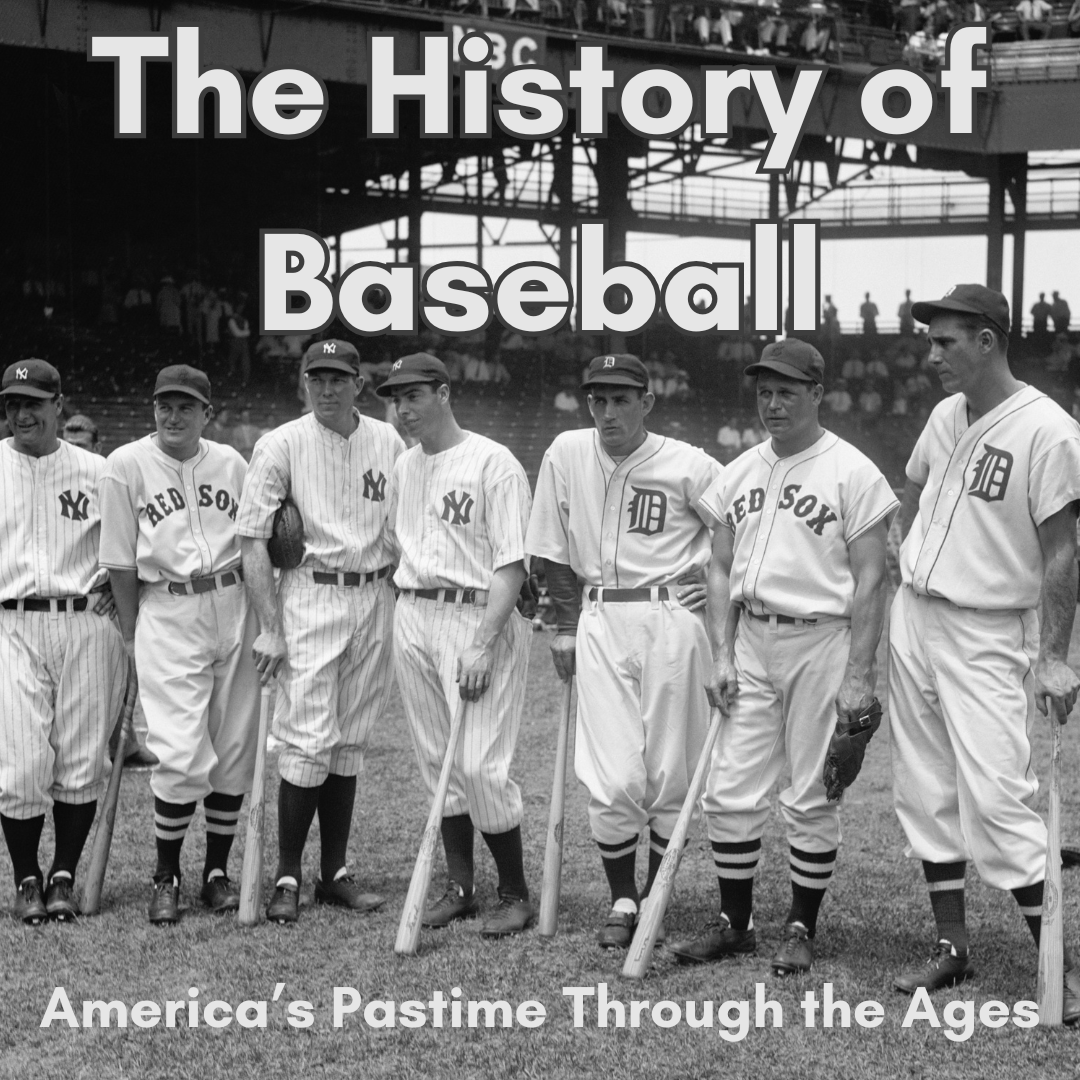Baseball holds a special place in American culture. More than just a sport, it has served as a symbol of unity, nostalgia, and resilience through generations. From its early folk-game roots to its modern-day international popularity, the history of baseball is a story of innovation, community, and timeless appeal.
Early Origins: Bat-and-Ball Games
The exact origins of baseball are complex and debated. While the myth credits Civil War hero-to-be Abner Doubleday with inventing the game in Cooperstown, New York in 1839, the reality is that baseball evolved from a variety of English bat-and-ball games like rounders and cricket.
-
18th Century: Variants of rounders and base-style games were played in colonial America.
-
1830s–1840s: Informal versions of “town ball” and “base ball” spread across the northeastern U.S.
The Modern Game Takes Shape
The structure of modern baseball began to crystallize in the mid-19th century.
-
1845: Alexander Cartwright of the Knickerbocker Base Ball Club in New York is credited with creating the first written rules of baseball—including three-strike rules, diamond-shaped bases, and nine-player teams.
-
1846: The first officially recorded game under modern rules was played in Hoboken, New Jersey.
-
1850s–1860s: Baseball’s popularity surged, especially after the Civil War, as soldiers spread the game across the country.
The Birth of Professional Baseball
-
1869: The Cincinnati Red Stockings became the first fully professional team, paying players a salary.
-
1876: The National League (NL) was established as the first major league.
-
1901: The rival American League (AL) was formed, and in 1903, the first World Series was held between the two league champions.
The Dead Ball Era (1900–1919)
This period was marked by low-scoring games and a focus on strategy: bunting, base-stealing, and hit-and-run plays. Pitchers dominated, and home runs were rare.
Notable moments:
-
1909: Honus Wagner leads the Pirates to a World Series victory.
-
1919: The infamous Black Sox Scandal, in which eight Chicago White Sox players were accused of throwing the World Series, rocked the sport and led to the appointment of the first baseball commissioner.
The Live Ball Era and the Rise of Legends (1920s–1940s)
-
1920: Babe Ruth's emergence with the Yankees changed the game, ushering in the “Live Ball Era” where power hitting became the norm.
-
1936: The National Baseball Hall of Fame was established in Cooperstown, New York.
-
1947: Jackie Robinson broke Major League Baseball’s color barrier, debuting for the Brooklyn Dodgers and forever changing the landscape of professional sports.
Expansion and Integration (1950s–1970s)
-
Teams expanded westward: the Dodgers and Giants moved to California in the late 1950s.
-
MLB integrated more players from Latin America, Japan, and beyond.
-
The introduction of free agency in the 1970s shifted the business and balance of power in the game.
The Modern Era (1980s–Present)
-
The 1980s and 90s saw the rise of cable TV and the explosion of baseball's media presence.
-
1994: A players’ strike canceled the World Series for the first time since 1904.
-
1998: The home run race between Mark McGwire and Sammy Sosa captivated the nation, but steroid revelations in the 2000s cast a shadow over the era.
In recent decades:
-
The game has continued to evolve with analytics (Moneyball), international expansion, and rule changes to speed up play.
-
New stars like Shohei Ohtani, Aaron Judge, and Ronald Acuña Jr. are redefining the limits of athleticism and versatility.
-
2023: MLB introduced major rule changes including the pitch clock, bigger bases, and defensive shift bans to speed up and modernize the game.
Baseball Around the World
Though rooted in the U.S., baseball has become a global sport:
-
Japan: Nippon Professional Baseball (NPB) is a national obsession.
-
Latin America: Countries like the Dominican Republic, Cuba, and Venezuela produce a significant portion of MLB talent.
-
South Korea and Taiwan: Both have thriving domestic leagues.
-
World Baseball Classic: An international tournament showcasing top players and national pride, helping spread baseball's reach.
Final Thoughts
From sandlots to stadiums, from leather mitts to high-tech metrics, baseball has always been about more than just hits and runs. It’s a timeless reflection of the culture around it—evolving with the country, inspiring generations, and connecting people through stories, traditions, and unforgettable moments.
Baseball isn't just America’s pastime—it’s a shared legacy.

















































































































